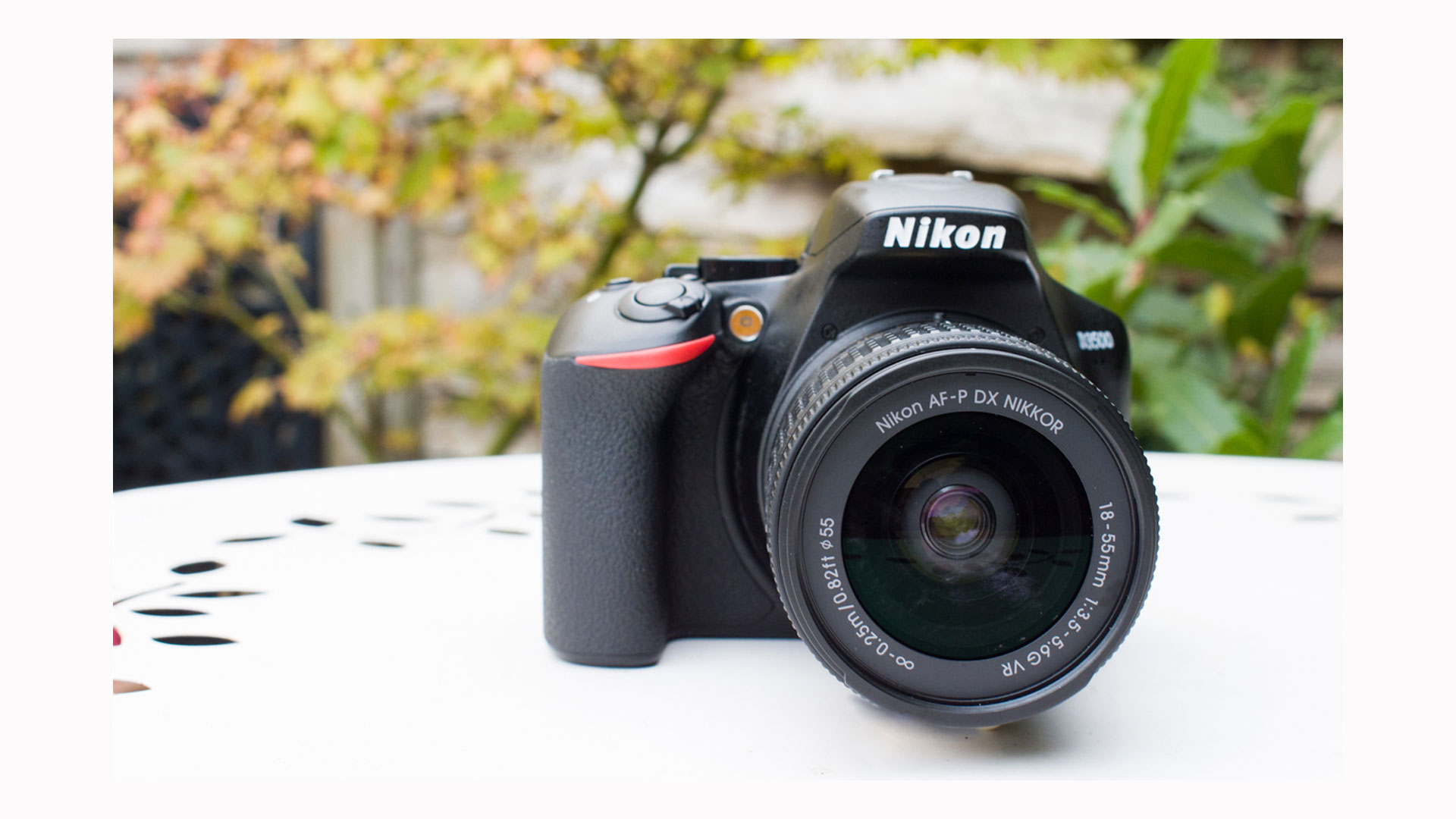Space Verdict
The Nikon D3500 is lacking in features found higher up in Nikon’s range, but for the price, it’s hard to argue.
Pros
- +
The price - it’s a lot of camera for less than $500
- +
Image sharpness and quality from basic kit lenses
- +
Guide Mode is good for absolute photography beginners
Cons
- -
Poor performance for those wanting to learn videomaking
- -
No Bluetooth makes transferring images remotely hard work
- -
Patchy autofocus
- -
Limited Live View responsiveness in low light conditions
Why you can trust Space.com
Type: Digital Single Lens Reflex
Sensor: DX Crop Sensor 24.2 mp
Lens mount: DX-format Nikon F Mount with AF contacts
ISO range: 100 - 25600
Viewfinder: Eye-level pentamirror single-lens reflex
Video capability: 1080p at 60, 50, 30, 25 and 24p
Weight: 0.8 lbs body only
Size: 4.9 x 3.9 x 2.8 (in)
Memory card type: SD (1 slot)
The Nikon D3500, replacing the brand's D3400, is the manufacturer's latest entry-level DSLR. It is aimed at the beginner photographer who wants to gravitate towards more advanced equipment without losing the pick-up-and-go attitude of many compact cameras or smartphone systems. In this review, we'll take a deeper look into the D3500, reviewing a number of its systems and assessing whether indeed this DX SLR outshines what is becoming stiff competition from other systems.
It isn't one of our best cameras for astrophotography, sadly, but at such a compelling price, it's a great entry-level for beginners.
Nikon D3500 review: Design
- Small and lightweight
- Excellent hand grip
- Buttons and menu items a little fiddly due to size
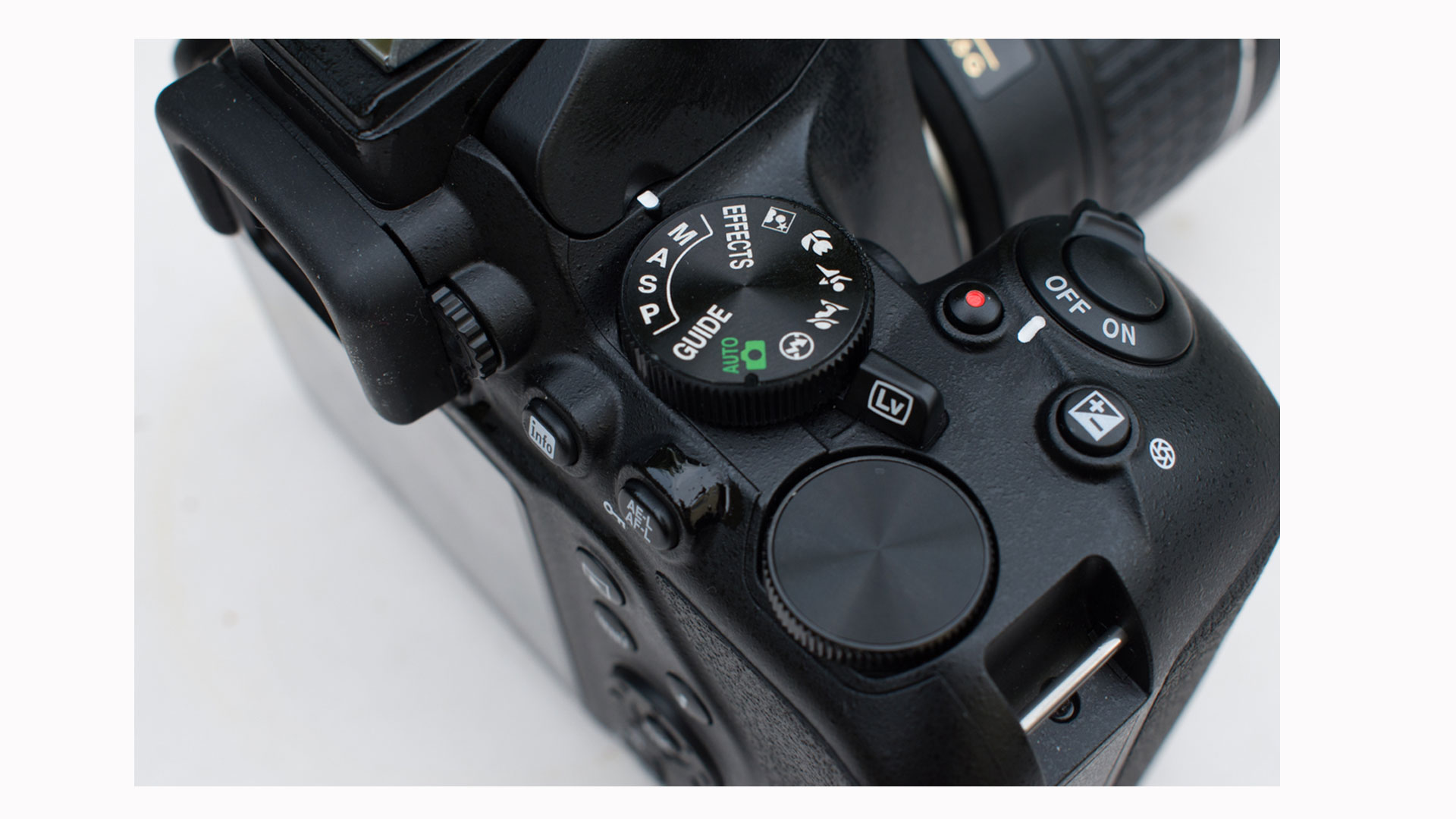
In today's era of snazzy smartphones and whizzy mirrorless cameras, taking an entry-level DSLR out of the box can be a somewhat underwhelming experience. The box itself is small, with the usual extras you'd expect to find within a DSLR package, such as a wall charger, lens caps, and the standard 18-55mm kit lens, but otherwise, there's little of note to report.
First impressions are largely related to the weight (or lack thereof) and the first thing we thought is that this must be one of the lightest DSLR cameras we've set our hands on in recent times. The weight of the 18-55mm kit lens is almost the same as the body itself; put together, it's still an easily manageable unit. Its ergonomics are somewhat helped by the deep handgrip and the back buttons, which have been reorganized since earlier incarnations of the D3xxx series, and now all sit on the right-hand side of the body for easy access.
Our only criticism is that the Nikon D3500 is so light that after a couple of trips out we were worried it'd get damaged - the lightness of the package itself is bordering on flimsy. Much like Nikon's D5xxx series of cameras, the body is so small it's also quite hard to change settings when looking through the viewfinder. There are many benefits to its size, however, and the weight of the unit is comparable to many travel or mirrorless cameras out there, making it easy to transport and fit into smaller padded camera shoulder bags.
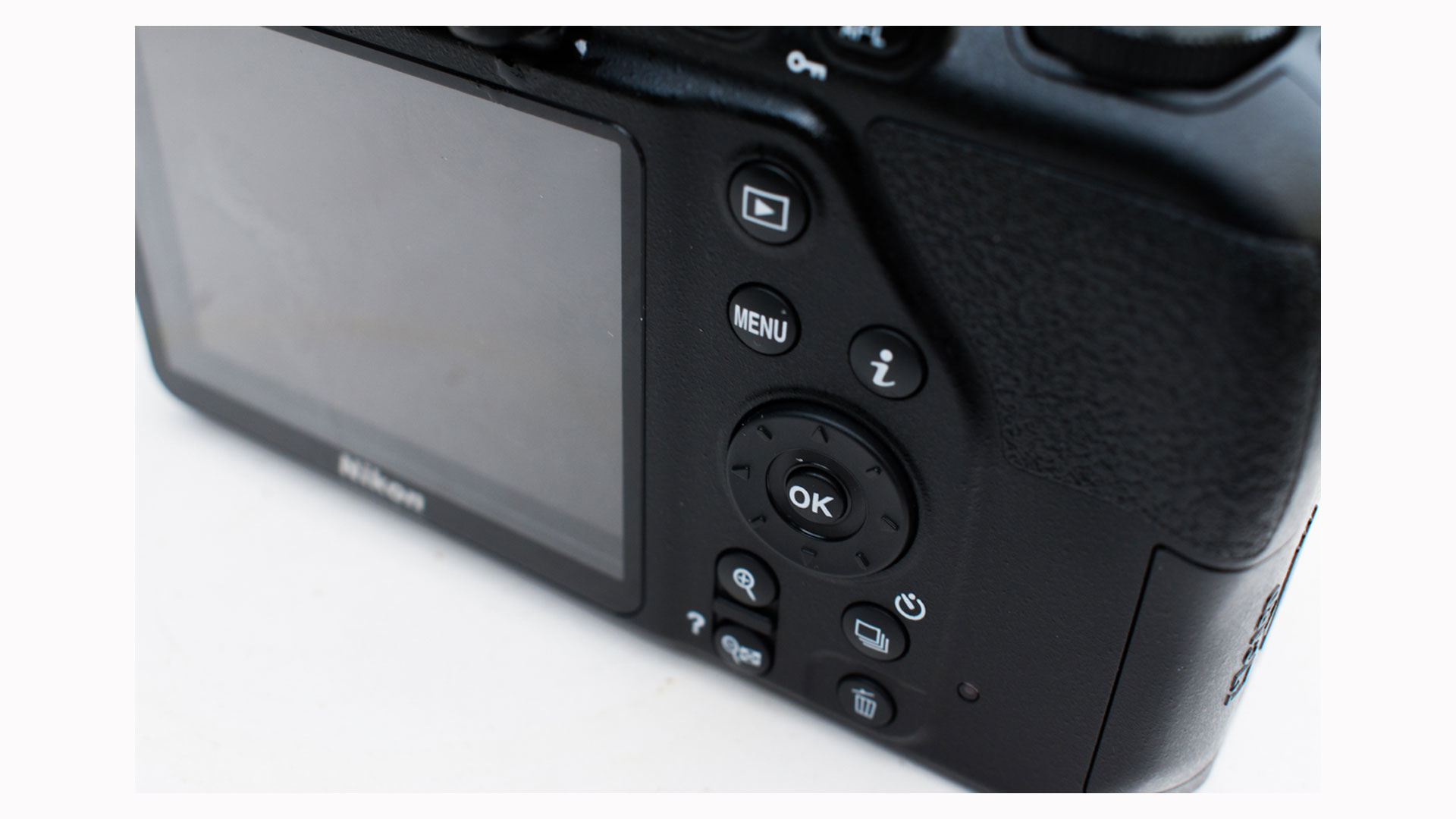
Nikon D3500 review: Functionality
- Lack of touchscreen may put some buyers off
- It's frustrating to have to access sub-menus to reach some settings
- Excellent and leading battery life and performance
Switch the Nikon D3500 on via the familiar right-hand side toggle switch and you're greeted with a standard Nikon setup and interface. Due to its size, we did find the redesigned button layout a little fiddly, but otherwise, the menu system and everyday operation of the camera are straightforward.
The biggest immediate and obvious drawback with the Nikon D3500 is the lack of a tilting LCD touchscreen, which on the D5xxx series of cameras makes awkward angles and quick setting adjustments a breeze. We often found ourselves swiping at the screen to no avail. There is, however, a good live view mode on the D3500, which paired with the 18-55mm kit lens produces accurate color reproduction and a sharp representation of what's in front of you. Without the tilt mode or the ability to press on the screen, however, this does have slightly limited potential for day-to-day shooting.
Like in Nikon's mid-range D5xxx series we found it frustrating that by default, 'ISO-A' mode is selected, which automatically moves the ISO setting up and down by itself. It doesn't have a quick-change button on the face of the camera, and instead requires manual selection in the sub-menu systems.
To the left of the camera, there's an HDMI slot and a USB connection slot for linking up to a computer, but sadly no 3.5mm jack for an external microphone connection, which makes HD video shooting a little limited. Twinned with the fact that there's no 4K mode means we'd be tempted to look elsewhere if we were a beginner looking to get into filmmaking further down the line.
The right-hand side of the camera features a standard size SD card slot and a battery compartment. The battery itself is said to have increased in capacity by around 30% and has a CIPA rating of over 1,500 images. That's an impressive rating, and although we did find the battery life to be good, usage is probably in reality a bit less than this.
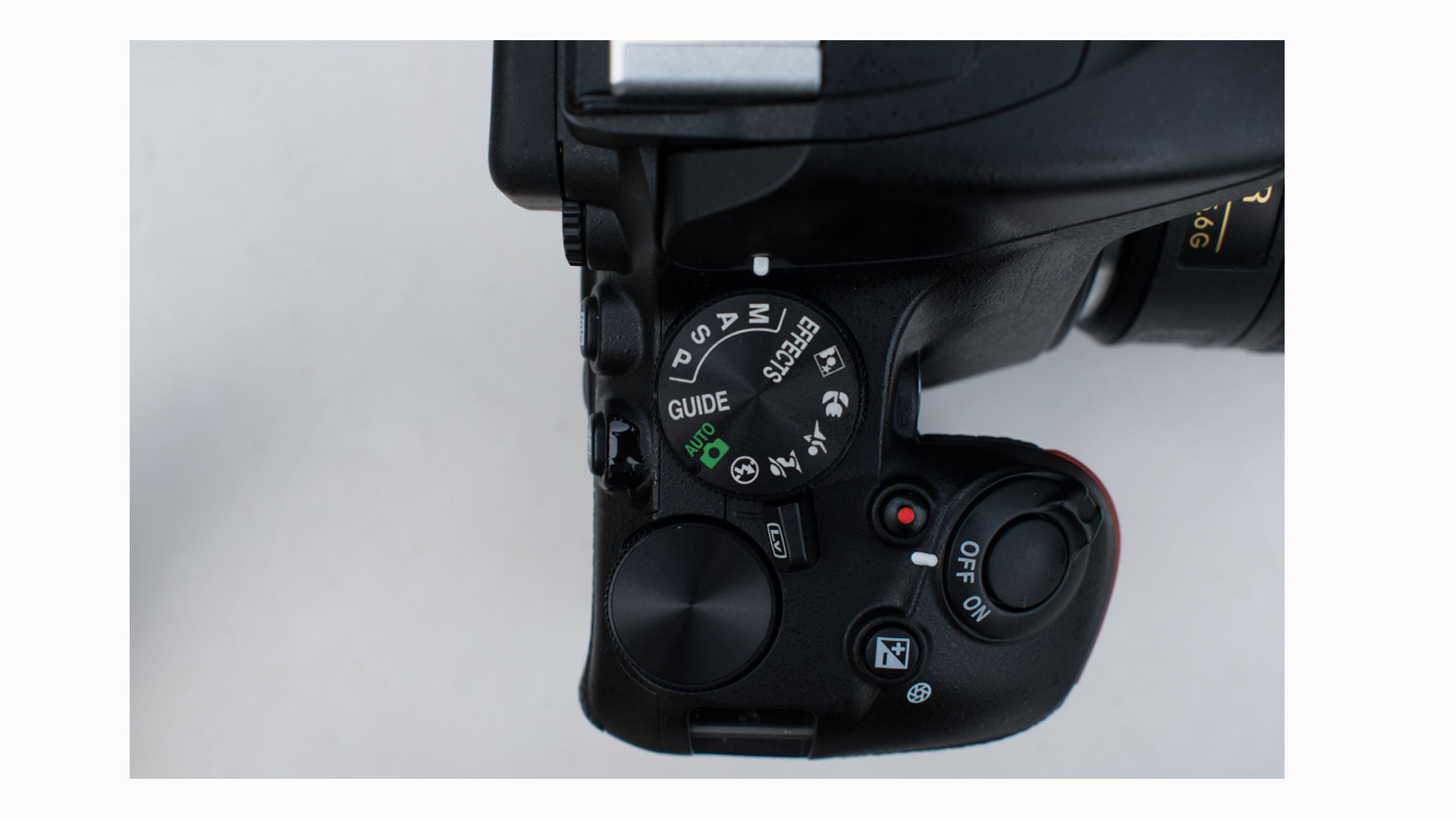
Nikon D3500 review: Performance
- Autofocus feels old-fashioned and is threatened to be outmoded
- Well-balanced straight-out-the-camera shots, with good detail and depth
- Guide Mode is good, but most will outgrow it quickly
Taking images, twinned with a standard 18-55mm kit lens, is a fairy straightforward affair and we think the camera does a good job of living up to its entry-level and beginner status, without having anything of great note to write home about. Being a couple of years old now, the autofocus system is starting to feel a little dated, and there are only 11 autofocus points, which have been superseded these days by many phones and beginner mirrorless systems. We would have like to have seen a few more outlying autofocus points - many of them as seen through the viewfinder are clustered around the middle of the frame. We also found that it focus hunted a bit in lower light conditions, which we'd expect to see in budget-friendly crop sensor DSLR cameras, but again we think there's a question mark here as to whether phones and mirrorless cameras do low-light better these days.
Other than the AF system, which many beginners admittedly won't worry too much about, the whole process of taking photos with the D3500 is pleasurable, and the quality of pictures themselves is excellent. In good light conditions, at low ISO settings, the camera reproduces color faithfully and even the standard kit lens we tested had a sharpness that's hard to find on other cameras at this price. There's no face detection through the optical viewfinder, so you'll have to use Live View for that, but this works well despite reducing battery life quite considerably. The straight out of the camera, unedited JPG files are nicely balanced in terms of temperature and exposure, but we found that in darker environments the dedicated metering sensor couldn't quite accurately predict the right settings, so we had to do a bit of exposure compensation here. That being said, we were impressed, and for picture quality alone the D3500 outperforms its position in Nikon's range.
Kit lens: 18-55mm VR (Stabilised)
Best wide lens: Tamron 10-24mm f/3.5-4.5 Di II VC HLD
Best zoom lens: Nikon AF-S 24-70mm f/2.8E ED VR
Spare battery type: EN-EL14a rechargeable Li-ion battery
Memory card: SD Card
Guide Mode is the most notable new addition to the D3500, which essentially works as a step-by-step mode to enable you to get the most out of each photograph. It works by offering menu items that are more akin to a compact camera setup, and graduates from these easier-to-use systems shouldn't have too much trouble learning the ropes of the D3500.
'Shoot', 'View, Delete', 'Retouch' and 'Set Up' menu items are immediately available upon selection of Guide Mode, and once through to the easy operation mode of the shoot screen users will be asked whether they are taking pictures of people, distant subjects, landscapes, sports or a night-scene, for instance. In the more advanced guide mode, you can select an aesthetic (eg, blurred backgrounds) and the camera will explain what settings it's putting itself in to achieve the desired results. A nice little feature that promotes beginner photographers to learn more about the craft.
The Retouch option also works quite well, allowing you to trim, colorize or edit particular images with in-built filters. It works well on both RAW and JPG files, but the options are basic and the results are quite limited. Over time, we'd suggest that most users of an entry-level DSLR like the D3500 will shoot in RAW format and export to external photo editing software to have more direct user control over their images.
SnapBridge is Nikon's connectivity app, allowing access to your camera and your images remotely using a smartphone, tablet, or laptop. The Nikon D3500 is equipped with low-energy Bluetooth energy only, and not the WiFi of many other cameras in its range like the next-level up D5xxx series. We thought this was a bit of a disappointment, as it's extremely slow to transfer pictures to a phone or tablet using Bluetooth connection only, and it makes transferring RAW images especially time-consuming. It also makes connectivity a little temperamental. A nice feature - but this option is better integrated in other cameras in Nikon's repertoire.
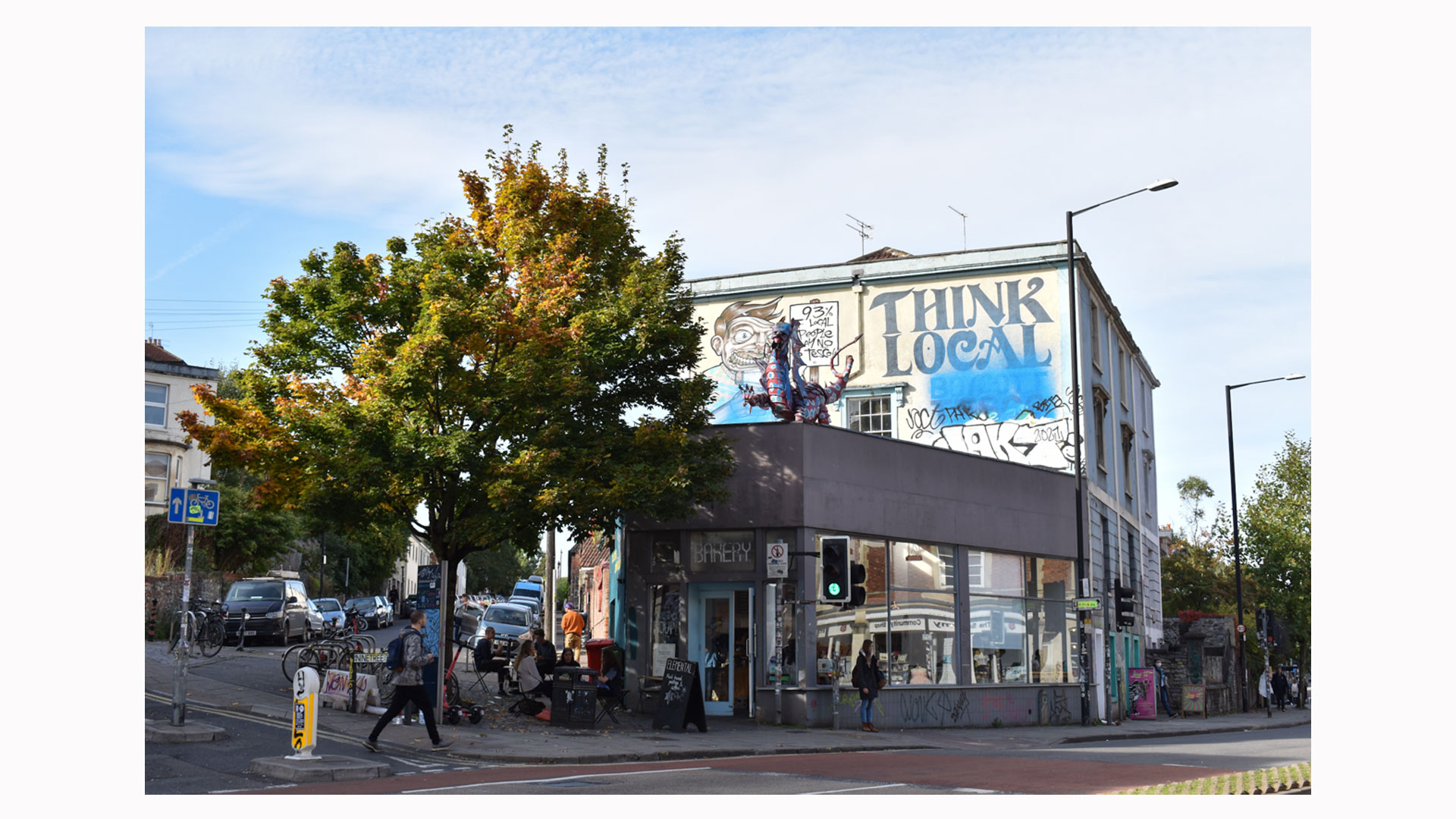
Should you buy the Nikon D3500
The D3500 is a good camera, even though many of its features have been surpassed now by improved technology. But, cameras like this aren't going anywhere, and the real crux of why is that they're relatively cheap to make and for consumers to buy.
For less than $500, you can get a premium image-making piece of equipment that despite the quality of smartphones, has the ability to take your photos to the next level. Full manual control is entirely possible - DSLR cameras have retained their popularity because the mechanics of their operation and the physical nature in which they take photographs can't be replicated by any other compact device. The 24-megapixel sensor has the ability to take photos that increase in scale and size easily, and most users will find that although basic, the D3500's performance in low-light conditions easily surpasses most smartphones.
The low price, especially when paired with a relatively impressive kit lens, starts to make the D3500 make a lot more sense, and we're impressed with how much quality Nikon has been able to pack in this unit.

The Nikon D3500 is ultimately a very good camera, perfectly set up for beginners to start to learn their craft and understand the basics of the science behind image-making. If you've had a bit of experience, however, we think the guide mode might be frustrating and redundant, and it's worth remembering that we think that this is a camera that you might grow out of quite quickly.
We were disappointed by no 4K video, no headphone unit, and no WiFi for connectivity, and we'd have liked to have seen a more honed autofocus system, but to be honest, to worry too much about these issues is to miss the point with the D3500. To get someone excited, intrigued, and curious about photography, it does a great job, and that's all it is set up to do. We like the pricing, its excellent battery life, and the ability to eschew the guide mode in favor of a more manual approach should you wish. Not having a tilt or touchscreen may hamper some users, but we generally found its operation straightforward without complicating matters like some mirrorless cameras can.
Although smaller, more advanced, and technically more gifted mirrorless and compact cameras are out there, there's something reassuring about the quality of the D3500 and proves there's still a market for keeping things simple. It's a camera that you'll quickly outgrow, but as a real basic starting point into the world of advanced photography, it doesn't get much better despite its operating limitations
Join our Space Forums to keep talking space on the latest missions, night sky and more! And if you have a news tip, correction or comment, let us know at: community@space.com.
Jacob Little is a photographer, writer and communications professional based in Bristol and Cornwall. His main inspirations come from outdoor adventure, travel, rural living and wild ways and crafts. Passionate about weaving the core principles of storytelling into his images, he approaches brand and copywriting work in much the same way. Conveying a compelling narrative is one of the main drivers behind much of his work.
